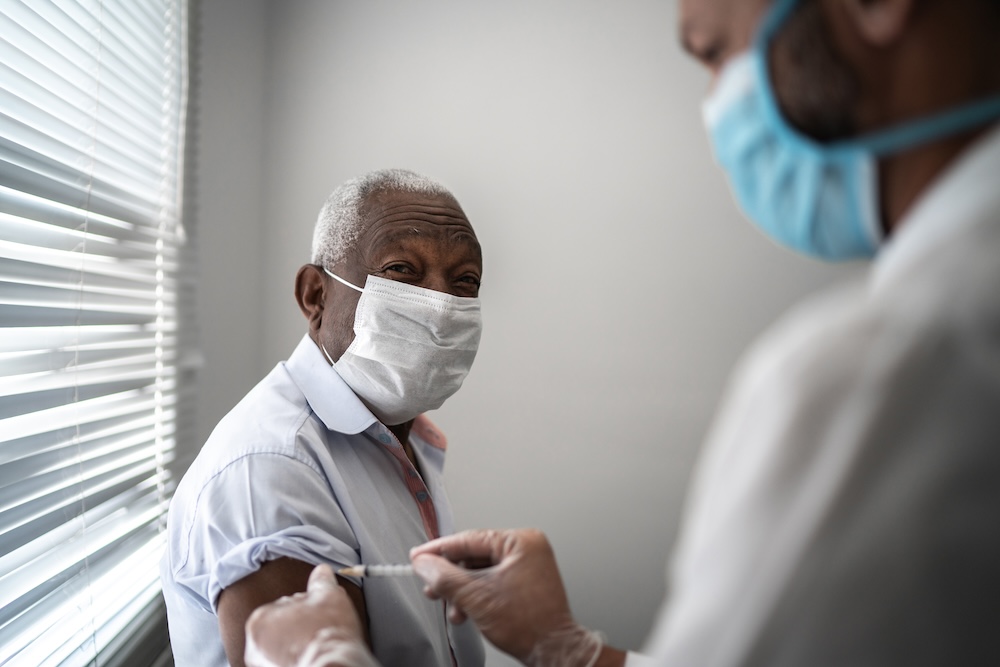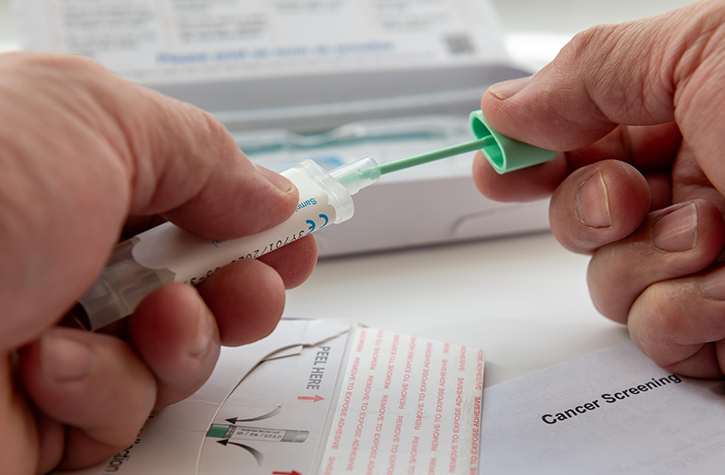June 17, 2024
The antiviral medications used to treat hepatitis C have a cure rate of 90% — or higher. The success of these medications has also led to new questions: Do cured patients have the same risk of liver disease as those who were never infected? And does everyone who is cured still need routine screening for liver cancer? A new study led by Kaiser Permanente researchers published in Gastro Hep Advances provides some answers.

Varun Saxena, MD, MAS
“Hepatitis C is the only virus that we can cure,” said study lead author Varun Saxena, MD, MAS, an adjunct investigator with the Kaiser Permanente Division of Research and a transplant hepatologist with The Permanente Medical Group. “When these medications first became available, most of the people we treated had had the virus for 20 or 30 years. We knew they would have better outcomes than those not treated, but we didn’t know whether their cure would return their risk for liver disease back to what it was before they were infected.”
Dr. Saxena and his colleagues identified 21,184 Kaiser Permanente (KP) Northern California patients ages 18 and over who had been diagnosed with chronic hepatitis C between 2002 and 2019. They also identified 11,950 patients who had been treated with antiviral medications and cured. A person is considered cured if no hepatitis C virus is seen in their blood 12 weeks after treatment ends. (Because the study covered a period before and after hepatitis C treatment was introduced in 2012, some people included in the study were in both the chronic and cured groups.) These patients were compared with 99,402 KP Northern California members who were similar — based on age, sex, and race/ethnicity — but had never been infected with hepatitis C.
The study found that about 18% of those with chronic hepatitis C developed liver scarring (cirrhosis) compared with 4% of those who were treated and cured, and 1% of those never infected. In models controlling for other health factors, the risk of cirrhosis was 240% higher among those with chronic hepatitis C compared with those never infected. The risk of cirrhosis was 70% higher for those treated and cured compared to those never infected.
There were also clear distinctions in the risk of liver cancer: 3.9% of those with chronic hepatitis C developed liver cancer compared to 1.6% of those cured and 0.07% of those never infected. In models controlling for other factors, the risk of liver cancer was 920% higher among those with chronic hepatitis C compared to the uninfected. It was 460% higher among those who were cured compared to the uninfected. Overall, 14% of those with chronic hepatitis C died from any cause during the time period studied compared to 2.8% of those cured and 2.2% of those never infected.
Identifying low-risk patients
For its second analysis, the research team divided the 11,950 treated patients into 2 risk groups, based on the extent of liver damage they had at the time they were treated with antiviral medications and cured.
High-risk patients had either significant baseline liver disease, diabetes and obesity, alcohol-associated liver disease, or chronic hepatitis B at the time they were cured of hepatitis C. Those with none of these diseases were considered low risk.
“This was a novel piece of our research,” said Dr. Saxena. “We wanted to do this analysis so we could determine if, within the group of cured patients, there were a subset of patients who actually did as well as those who were never infected.”
This research found that more cases of cirrhosis were seen among the 7,540 high-risk cured patients than in the 4,410 low-risk cured patients. Moreover, those in the low-risk group were about as likely to develop cirrhosis as those who were never infected. The low-risk group was also about as likely as those who were never infected to develop symptomatic cirrhosis, liver cancer, or to die from any cause.

Julie Schmittdiel, PhD
“These findings highlight the value of doing research in a learning health care system setting, like Kaiser Permanente, which not only helps us generate important findings but gives us the opportunity to translate the work into opportunities to improve care for our patients,” said Julie Schmittdiel, PhD, associate director for Health Care Delivery and Policy at the Division of Research.
Currently, the American Association for the Study of Liver Diseases recommends ongoing liver cancer surveillance in people cured of hepatitis C who had cirrhosis before their treatment. Surveillance typically includes a blood test and scan for liver cancer every 6 months.
“Our findings suggest that not everyone who is cured needs to continue with this type of surveillance at a specialty clinic,” said Dr. Saxena. “For people who would be classified as low risk, there may be the potential to go forward with fewer routine follow-up tests and scans for liver cancer.”
The study was funded by The Permanente Medical Group Rapid Analytics Program.
Co-authors include Weilu Wu, MS, of the Division of Research; and Sreepriya Balasubramanian, MD, MPH, Nizar Mukhtar, MD, Suk I. Seo, MD, Joanna B. Ready, MD, and Brock A. MacDonald, MD, of The Permanente Medical Group.
This article originally appeared on Division of Research Spotlight.






